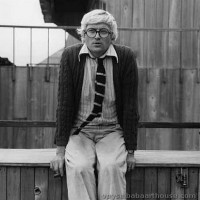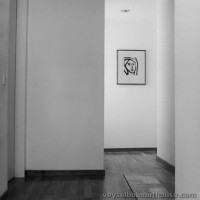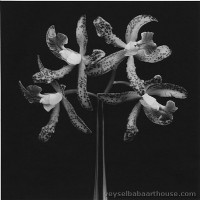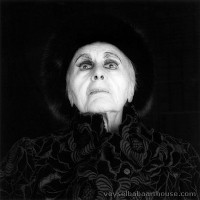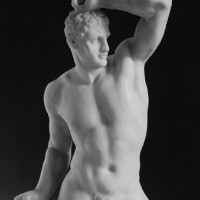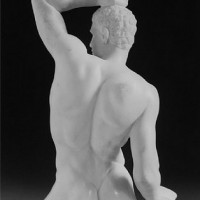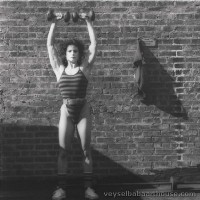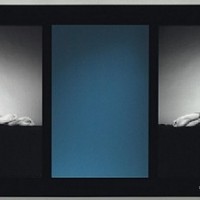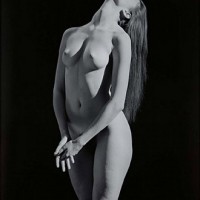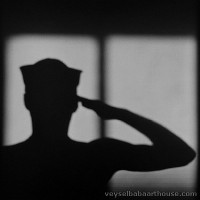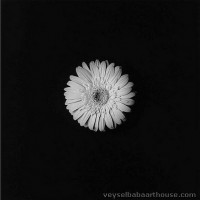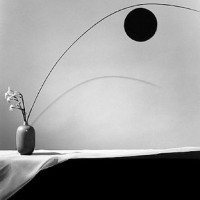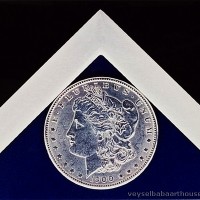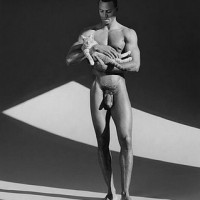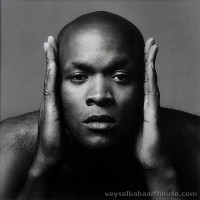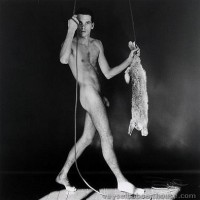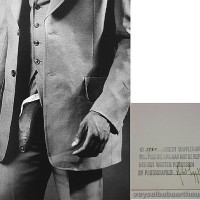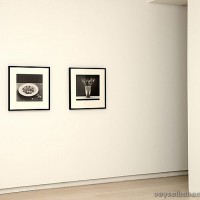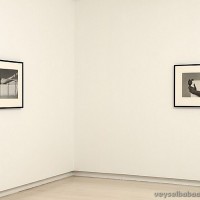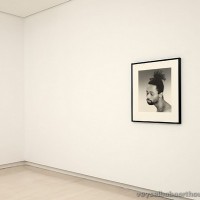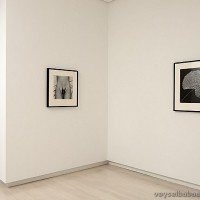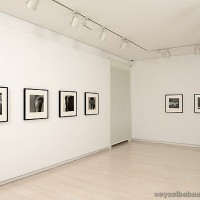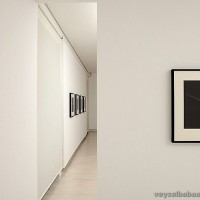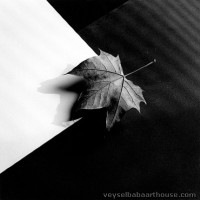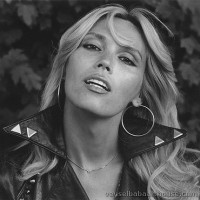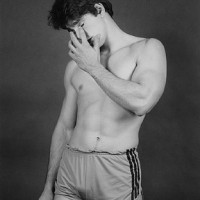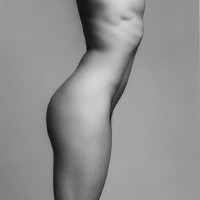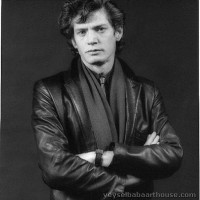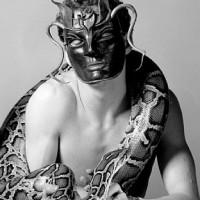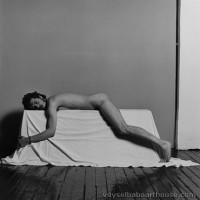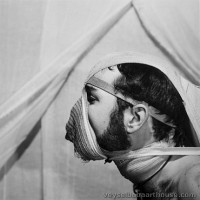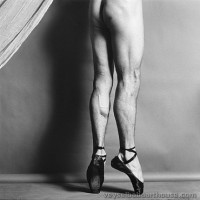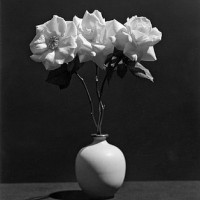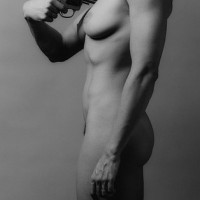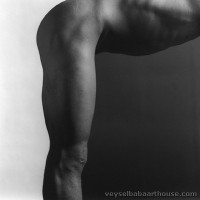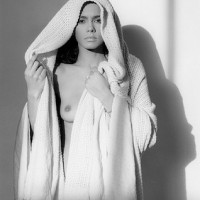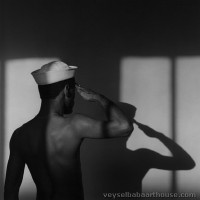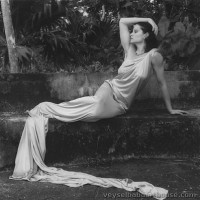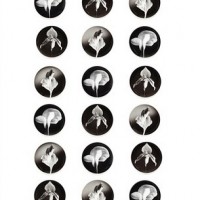- Home
- ABOUT US
- ABOUT VEYSEL BABA
- REDFOX ART HOUSE VIRTUAL TOUR
- MY LAST WILL TESTAMENT
- NOTES ON HUMANITY AND LIFE
- HUMAN BEING IS LIKE A PUZZLE WITH CONTRADICTIONS
- I HAVE A WISH ON BEHALF OF THE HUMANITY
- WE ARE VERY EXHAUSTED AS THE DOOMSDAY IS CLOSER
- NO ROAD IS LONG WITH GOOD COMPANY
- THE ROAD TO A FRIENDS HOUSE IS NEVER LONG
- MY DREAMS 1
- MY DREAMS 2
- GOLDEN WORDS ABOUT POLITICS
- GOLDEN WORDS ABOUT LOVE
- GOLDEN WORDS ABOUT LIFE
- GOLDEN WORDS ABOUT DEATH
- VEYSEL BABA ART WORKS
- SHOREDITCH PARK STORIES
- EXAMPLE LIVES
- ART GALLERY
- BOOK GALLERY
- MUSIC GALLERY
- MOVIE GALLERY
- Featured Article
- Home
- ART GALLERY
- Robert Mapplethorpe
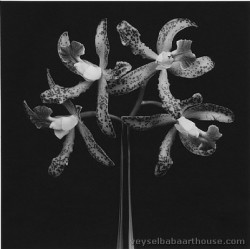
Robert Mapplethorpe
Robert Mapplethorpe (/ˈmeɪpəlˌθɔːrp/; November 4, 1946 – March 9, 1989) was an American photographer, known for his sensitive yet blunt treatment of controversial subject-matter in the large-scale, highly stylized black and white medium of photography. His work featured an array of subjects, including celebrity portraits, male and female nudes, self-portraits and still-life images of flowers. His most controversial work is that of the underground BDSM scene in the late 1960s and early 1970s of New York City. The homoeroticism of this work fuelled a national debate over the public funding of controversial artwork.
Biography
Mapplethorpe was born in Floral Park, Queens, New York City, the son of Joan Dorothy (Maxey) and Harry Irving Mapplethorpe, an electrical engineer.[1] He was of English, Irish, and German descent, and grew up as a Roman Catholic in Our Lady of the Snows Parish. He had five brothers and sisters.[2] He studied for a Bachelor of Fine Arts from the Pratt Institute in Brooklyn, where he majored in Graphic Arts,[3] though he dropped out in 1969 before finishing his degree.[4] Mapplethorpe lived with his close friend Patti Smith from 1967 to 1972, and she supported him by working in bookstores. They created art together, and maintained a close relationship.
From 1977 until 1980, Mapplethorpe was the lover of writer and Drummer magazine editor Jack Fritscher.[5]
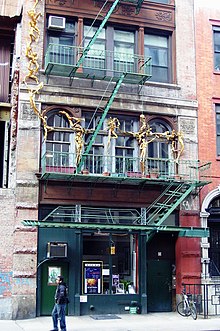
Mapplethorpe took his first photographs in the late 1960s or early 1970s using a Polaroid camera. In the mid-1970s, he acquired a Hasselblad medium-format camera and began taking photographs of a wide circle of friends and acquaintances, including artists, composers, and socialites. During this time, he became friends with New Orleans artist George Dureau, whose work had a profound impact on Mapplethorpe, so much so that he restaged many of Dureau's early photographs. By the 1980s his subject matter focused on statuesque male and female nudes, delicate flower still lifes, and highly formal portraits of artists and celebrities. Mapplethorpe's first studio was at 24 Bond Street in Manhattan. In the 1980s, his mentor and lifetime companion art curator Sam Wagstaff bought a top-floor loft at 35 West 23rd Street for Robert, where he lived and used as his shooting space.[6] He kept the Bond Street loft as his darkroom. In 1988, Mapplethorpe selected Patricia Morrisroe to write his biography, which was based on more than 300 interviews with celebrities, critics, lovers, and Mapplethorpe himself.[6]
Death
Mapplethorpe died on the morning of March 9, 1989 at the age of 42 due to complications from HIV/AIDS, in a Boston, Massachusetts hospital. His body was cremated. His ashes are interred at St. John's Cemetery, Queens in New York, at his mother's grave-site, etched "Maxey".
Nearly a year before his death, the ailing Mapplethorpe helped found the Robert Mapplethorpe Foundation, Inc. His vision for the Foundation was that it would be "the appropriate vehicle to protect his work, to advance his creative vision, and to promote the causes he cared about".[7] Since his death, the Foundation has not only functioned as his official estate and helped promote his work throughout the world, but it has also raised and donated millions of dollars to fund medical research in the fight against AIDS and HIV infection.[7] The Foundation also determines which galleries represent Mapplethorpe's art.[8][9] The Robert Mapplethorpe Foundation donated the Robert Mapplethorpe Archive to the Getty Research Institute. The archive spans from 1970 to 1989.[10]
Art
Mapplethorpe worked primarily in a studio, and almost exclusively in black and white, with the exception of some of his later work and his final exhibit "New Colors". His body of work features a wide range of subjects, but his main focus and the greater part of his work is erotic imagery. He would refer to some of his own work as pornographic,[6] with the aim of arousing the viewer, but which could also be regarded as high art.[11] His erotic art explored a wide range of sexual subjects, depicting the BDSM subculture of New York in the 1970s, portrayals of black male nudes, and classical nudes of female bodybuilders. Mapplethorpe was a participant observer for much of his erotic photography, participating in the sexual acts which he was photographing and engaging his models sexually.[11]
Other subjects included flowers, especially orchids and calla lilies, children, statues, and celebrities, including Andy Warhol, Louise Bourgeois, Deborah Harry, Richard Gere, Peter Gabriel, Grace Jones, Amanda Lear, Laurie Anderson, Joan Armatrading and Patti Smith. Smith was a longtime roommate of Mapplethorpe and a frequent subject in his photography, including a stark, iconic photograph that appears on the cover of Smith's first album, Horses.[12] His work often made reference to religious or classical imagery, such as a portrait of Patti Smith [13] from 1986 which recalls Albrecht Dürer's 1500 self-portrait.[14]
Robert took areas of dark human consent and made them into art. He worked without apology, investing the homosexual with grandeur, masculinity, and enviable nobility. Without affectation, he created a presence that was wholly male without sacrificing feminine grace. He was not looking to make a political statement or an announcement of his evolving sexual persuasion. He was presenting something new, something not seen or explored as he saw and explored it. Robert sought to elevate aspects of male experience, to imbue homosexuality with mysticism. As Cocteau said of a Genet poem, "His obscenity is never obscene."
Controversy
The Perfect Moment (1989 solo exhibit tour)
In the summer of 1989, Mapplethorpe's traveling solo exhibit brought national attention to the issues of public funding for the arts, as well as questions of censorship and the obscene. The Corcoran Gallery of Art in Washington, D.C., had agreed to be one of the host museums for the tour. Mapplethorpe decided to show his latest series that he explored shortly before his death. Titled Robert Mapplethorpe: The Perfect Moment, the show included photographs from his X Portfolio, which featured images of urophagia, BDSM and a self-portrait with a bullwhip inserted in his anus.[16] The show was curated by Janet Kardon of the Institute of Contemporary Art (ICA).[17][18] The ICA was awarded a grant from the National Endowment for the Arts to support Mapplethorpe's exhibit at the Corcoran Gallery of Art. The cancellation of the show, which terminated the Corcoran's contract with the ICA, was due to the fact that the museum did not want to get involved in the politics. Instead, the Corcoran was pulled into the controversy, which "intensified the debate waged both in the media and in Congress surrounding the NEA's funding of projects perceived by some individuals... to be inappropriate..."[19] The hierarchy of the Corcoran and several members of the U.S. Congress were upset when the works were revealed to them, due the homoerotic and sadomasochistic themes of some of the work. Though much of his work throughout his career had been regularly displayed in publicly funded exhibitions, conservative and religious organizations, such as the American Family Association, seized on this exhibition to vocally oppose government support for what they called "nothing more than the sensational presentation of potentially obscene material."[20]
In June 1989, pop artist Lowell Blair Nesbitt became involved in the censorship issue. Nesbitt, a long-time friend of Mapplethorpe, revealed that he had a $1.5-million bequest to the museum in his will, but publicly promised that if the museum refused to host the exhibition, he would revoke the bequest. The Corcoran refused and Nesbitt bequeathed the money to the Phillips Collection instead. After the Corcoran refused the Mapplethorpe exhibition, the underwriters of the exhibition went to the nonprofit Washington Project for the Arts,[21] which showed all the images in its space from July 21 to August 13, 1989, to large crowds.[22][23] In 1990, the Contemporary Arts Center in Cincinnati, and Dennis Barrie, were charged with obscenity. They were found not guilty by a jury.[24]
According to the ICA, "The Corcoran's decision sparked a controversial national debate: Should tax dollars support the arts? Who decides what is "obscene" or "offensive" in public exhibitions? And if art can be considered a form of free speech, is it a violation of the First Amendment to revoke federal funding on grounds of obscenity? To this day, these questions remain very much at issue."[17][25] Mapplethorpe became something of a cause célèbre for both sides of the American culture war. However, prices for many of the Mapplethorpe photographs doubled and even tripled as a consequence of all the attention. The artist's notoriety supposedly also helped the posthumous sale at Christie's auction house of Mapplethorpe's own collection of furniture, pottery, silver and works by other artists, which brought about $8 million.[26]
UCE controversy
In 1998, the University of Central England was involved in a controversy when a book by Mapplethorpe was confiscated. A final-year undergraduate student was writing a paper on the work of Robert Mapplethorpe and intended to illustrate the paper with a few photographs from Mapplethorpe, a book of the photographer's work. She took the photographs to the local chemist to be developed and the chemist informed West Midlands Police because of the unusual nature of the images. The police confiscated the library book from the student and informed the university that the book would have to be destroyed. If the university agreed to the destruction, no further action would be taken.
The university Vice-Chancellor, Dr. Peter Knight, supported by the Senate, took the view that the book was a legitimate book for the university library to hold and that the action of the police was a serious infringement of academic freedom. The Vice-Chancellor was interviewed by the police, under caution, with a view to prosecution under the terms of the Obscene Publications Acts.
After the interview with the Vice-Chancellor, a file was sent to the Crown Prosecution Service for a determination by the Director of Public Prosecutions whether to proceed with a trial. After a delay of about six months, the affair came to an end when Dr. Knight was informed by the DPP that no action would be taken.[27]
The Black Book
The 1986 solo exhibition "Black Males" and the subsequent book The Black Book sparked controversy for their depiction of black men. The images, erotic depictions of black men, were widely criticized for being exploitative.[28][29][30] The work was largely phallocentric and sculptural, focusing on segments of the subject's bodies. His purported intention with these photographs and the use of black men as models was the pursuit of the Platonic ideal.[6] Mapplethorpe's initial interest in the black male form was inspired by films like Mandingo and the interrogation scene in Cruising, in which an unknown black character enters the interrogation room and slaps the protagonist across the face.[31]
Criticism was the subject of a work by American conceptual artist Glenn Ligon, Notes on the Margins of the Black Book (1991–1993). Ligon juxtaposes Mapplethorpe's 91 images of black men in the 1988 publication Black Book with critical texts and personal reactions about the work to complicate the racial undertones of the imagery.[32]
American poet and activist Essex Hemphill also expressed criticism in his anthology Brother to Brother (1991). Although he believed that Mapplethorpe's work reflected exceptional talent, Hemphill also believed that it displayed a lack of concern for black individuals in the gay community, "except as sexual subjects".[33]
Posthumously
In 1992, author Paul Russell dedicated his novel Boys of Life to Mapplethorpe, as well as to Karl Keller and Pier Paolo Pasolini.[34]
When Mapplethorpe: A Biography by Patricia Morrisroe was published by Random House in 1995,[6] the Washington Post Book World described it as "Mesmerizing... Morrisroe has succeeded in re-creating the photographer's world of light and dark."[35] Art critic Arthur C. Danto, writing in The Nation, praised it as "utterly admirable... The clarity and honesty of Morrisroe's portrait are worthy of its subject."[36]
In 1996, Patti Smith wrote a book The Coral Sea dedicated to Mapplethorpe.[37]
Philips released a photo disc for their CD-i video game system in the late 1990s called The Flowers of Robert Mapplethorpe.[38]
In September 1999, Arena Editions published Pictures, a monograph that reintroduced Mapplethorpe's sex pictures. In 2000, Pictures was seized by two South Australian plain-clothes detectives from an Adelaide bookshop in the belief that the book breached indecency and obscenity laws.[39] Police sent the book to the Canberra-based Office of Film and Literature Classification after the state Attorney-General's Department deftly decided not to get involved in the mounting publicity storm. Eventually, the OFLC board agreed unanimously that the book, imported from the United States, should remain freely available and unrestricted.[40]
In May 2007, American writer, director, and producer James Crump directed the documentary film Black White + Gray, which premiered at the 2007 Tribeca Film Festival. It explores the influence Mapplethorpe, curator Sam Wagstaff, and musician/poet Patti Smith had on the 1970s art scene in New York City.[41][42][43][44][45]
In September 2007, Prestel published Mapplethorpe: Polaroids, a collection of 183 of approximately 1,500 existing Mapplethorpe polaroids.[46] This book accompanies an exhibition by the Whitney Museum of American Art in May 2008.
In 2008, Robert Mapplethorpe was named by Equality Forum as one of their 31 Icons of the 2015 LGBT History Month.[47]
Patti Smith's 2010 memoir Just Kids focuses on her relationship with Mapplethorpe.[48] The book won the 2010 National Book Award for Nonfiction.[49]
In January, 2016, filmmaker Ondi Timoner announced that she was directing a feature about Mapplethorpe, with Matt Smith in the lead role.[50]
The American documentary film, Mapplethorpe: Look at the Pictures, was released in 2016. It was directed and executive produced by Randy Barbato and Fenton Bailey, and produced by Katharina Otto-Bernstein.[51][52][53][54][55][56]
Art market
The Estate of Robert Mapplethorpe is represented by Alison Jacques Gallery in London (since 1999),[57] Sean Kelly Gallery in New York (since 2004),[58] and Moran Bondaroff in Los Angeles (since 2013).[59] The Estate is also represented by eight other galleries in Europe.[59] Since 2005, in partnership with the Robert Mapplethorpe Foundation, Galerie Thaddaeus Ropac has been inviting Hedi Slimane, Robert Wilson, Sofia Coppola and Isabelle Huppert to act as guest curators and to select a series of the foundation's images for several gallery shows.[60]
In 2006, a 1987 Mapplethorpe print of Andy Warhol (a platinum print on linen with four silk panels) was auctioned for around $US 643,000,[61] making it the most expensive Mapplethorpe photograph ever sold.
Selected works
- Mapplethorpe, Robert. Robert Mapplethorpe: 1970-1983. London: Institute of Contemporary Arts, 1983. ISBN 0-905263-31-6
- Mapplethorpe, Robert, and Bruce Chatwin. Lady, Lisa Lyon. New York: Viking Press, 1983. ISBN 0-670-43012-9
- Mapplethorpe, Robert. Certain people: a book of portraits. Pasadena, CA: Twelvetrees Press, 1985. ISBN 0-942642-14-7
- Mapplethorpe, Robert, and Ntozake Shange. Black book. New York: St. Martin's Press, 1986. ISBN 0-312-08302-5
- Marshall, Richard, and Robert Mapplethorpe. 50 New York artists: a critical selection of painters and sculptors working in New York. San Francisco: Chronicle Books, 1986. ISBN 0-87701-403-5
- Mapplethorpe, Robert. Robert Mapplethorpe. Tokyo: Parco, 1987. ISBN 4-89194-149-9
- Mapplethorpe, Robert. Mapplethorpe portraits. London: National Portrait Gallery, 1988. ISBN 0-904017-91-5
- Mapplethorpe, Robert, and Joan Didion. Some women. Boston: Bulfinch Press, 1989. ISBN 0-8212-1716-X
- Kardon, Janet, Robert Mapplethorpe, David Joselit, and Kay Larson. Robert Mapplethorpe: the perfect moment. 2nd ed. Philadelphia: Institute of Contemporary Art, University of Pennsylvania, 1989. ISBN 0-88454-046-4
- Mapplethorpe, Robert. Flowers. Boston: Bulfinch Press, 1990. ISBN 0-8212-1781-X
- Mapplethorpe, Robert, and Arthur Coleman Danto. Mapplethorpe. New York: Random House, 1992. ISBN 0-679-40804-5
- Mapplethorpe, Robert, and Edmund White. Altars. New York: Random House, 1995. ISBN 0-679-42721-X
- Mapplethorpe, Robert, John Ashbery, Mark Holborn, and Dimitri Levas. Pistils. New York: Random House, 1996. ISBN 0-679-40805-3
- Rimbaud, Arthur, Paul Schmidt, and Robert Mapplethorpe. A season in hell. Boston: Little, Brown, 1997. ISBN 0-8212-2458-1
- Mapplethorpe, Robert, and Dimitri Levas. Pictures. Arena Editions, 1999. ISBN 1-892041-16-2
- Mapplethorpe, Robert, and Richard Marshall. Autoportrait. Santa Fe, NM: Arena Editions in association with Cheim and Reid, 2001. ISBN 1-892041-41-3
- Mapplethorpe, Robert, Germano Celant, Arkadii Ippolitov, Karole P B Vail, and Jennifer Blessing. Robert Mapplethorpe and the classical tradition: photographs and Mannerist prints. Berlin: Deutsche Guggenheim, 2004. ISBN 0-89207-313-6
- Wolf, Sylvia, and Robert Mapplethorpe. Polaroids: Mapplethorpe. Munich and New York: Prestel, 2007. ISBN 978-3-7913-3835-4
Selected exhibitions
- 1973: "Polaroids" Light Gallery, New York
- 1977: "Portraits" Holly Solomon Gallery, New York
- 1979: "Robert Mapplethorpe: 1970-1975" Robert Samuel Gallery, New York
- 1980: "Black Males" Jurka Gallery, Amsterdam, Netherlands
- 1983: "Lady, Lisa Lyons" Leo Castelli Gallery, New York
- 1988:
- Whitney Museum of Art, New York
- "New Color Work" Robert Miller Gallery, New York, NY
- "Robert Mapplethorpe, the Perfect Moment" Institute of Contemporary Art, Philadelphia
- 1989: "Robert Mapplethorpe, the Perfect Moment" Washington Project for the Arts, Washington D.C.
- 1991: "Robert Mapplethorpe, Early Works" Robert Miller Gallery, New York
- 1994: "The Robert Mapplethorpe Gallery" Guggenheim Museum, New York
- 1996 "Children" Robert Miller Gallery, New York
